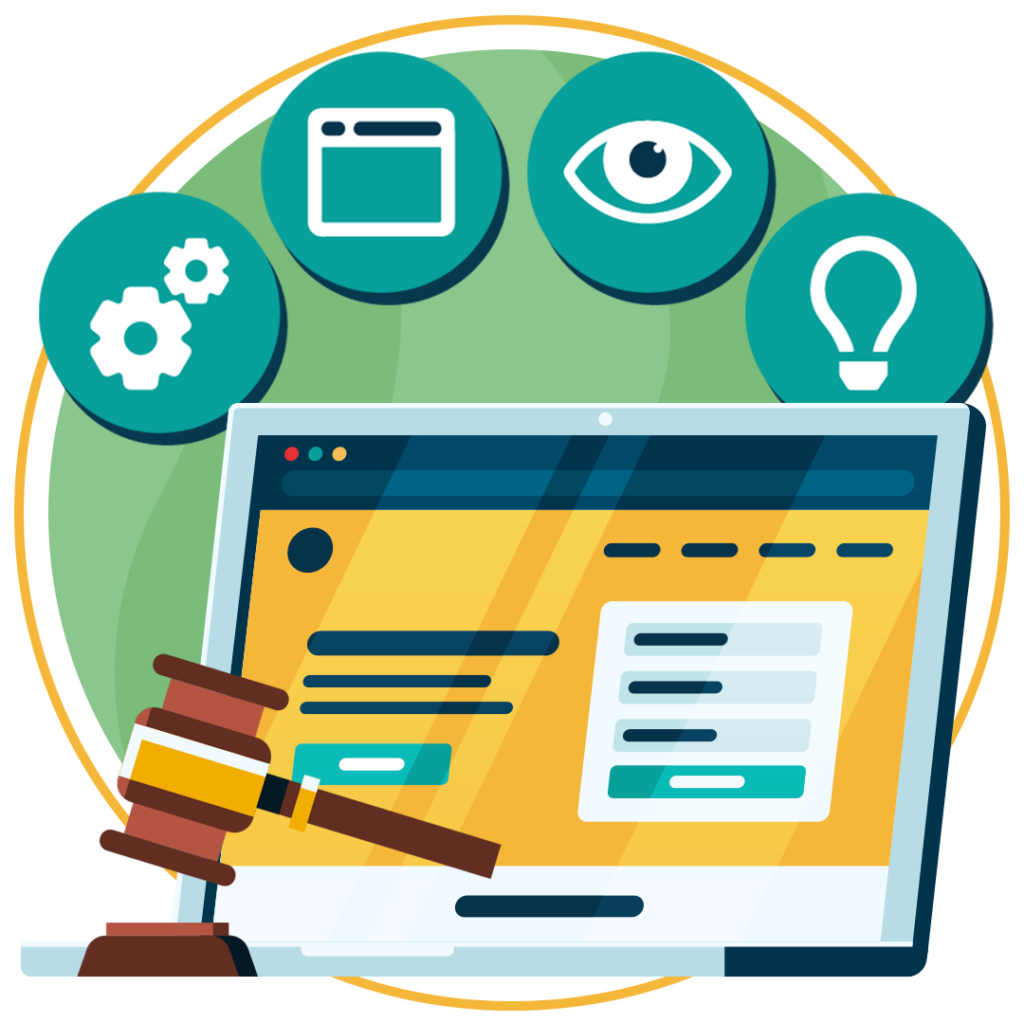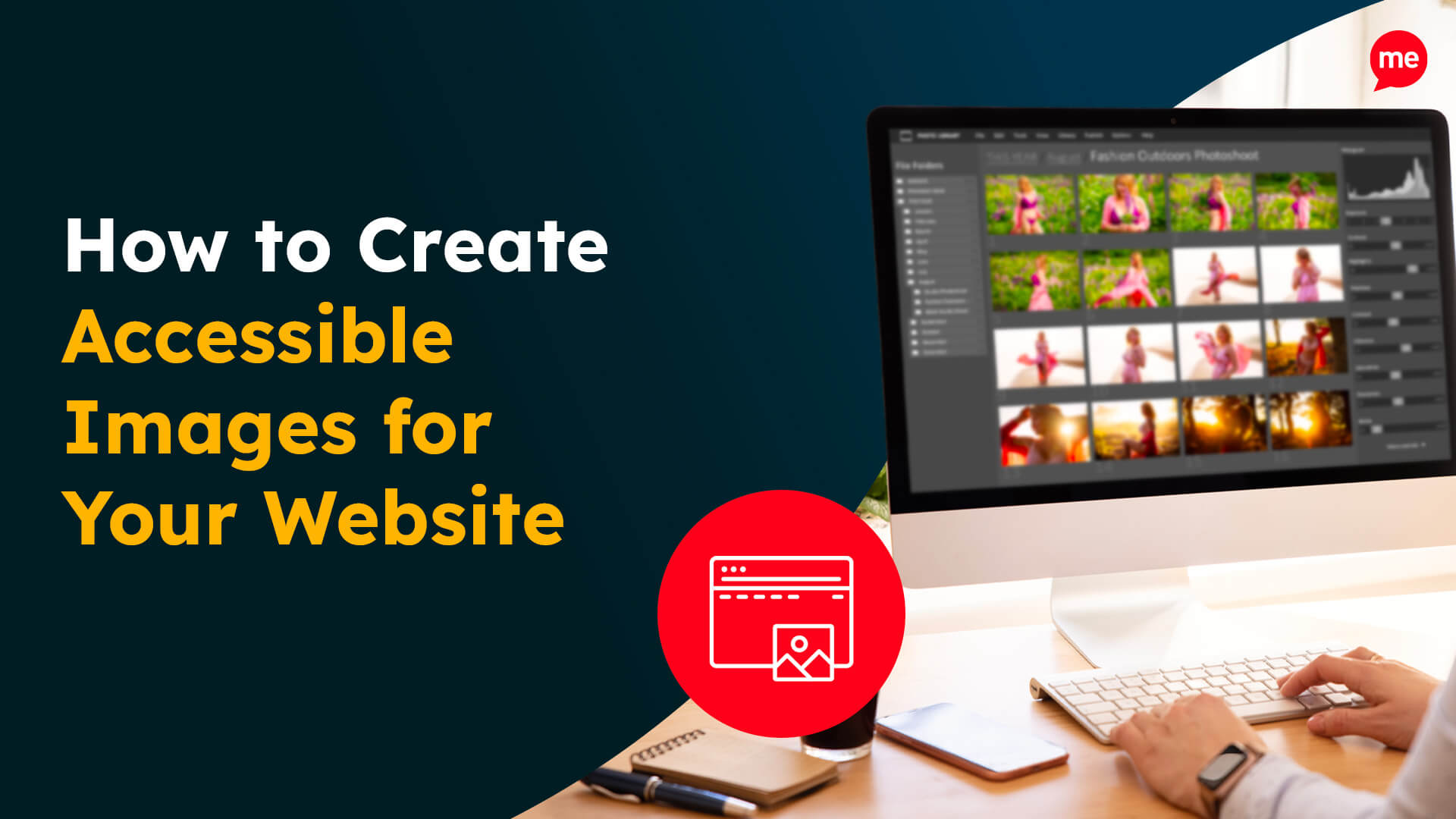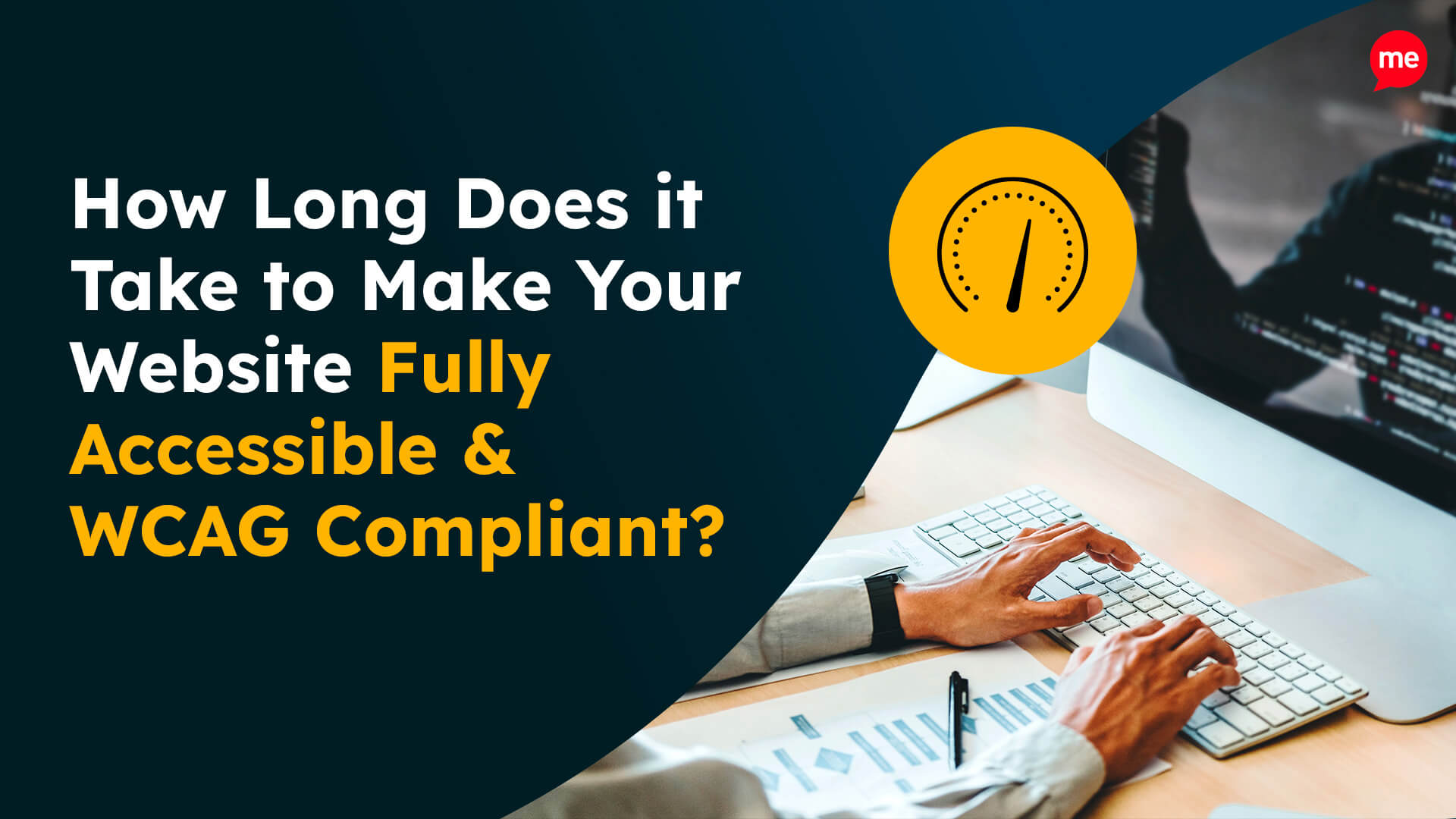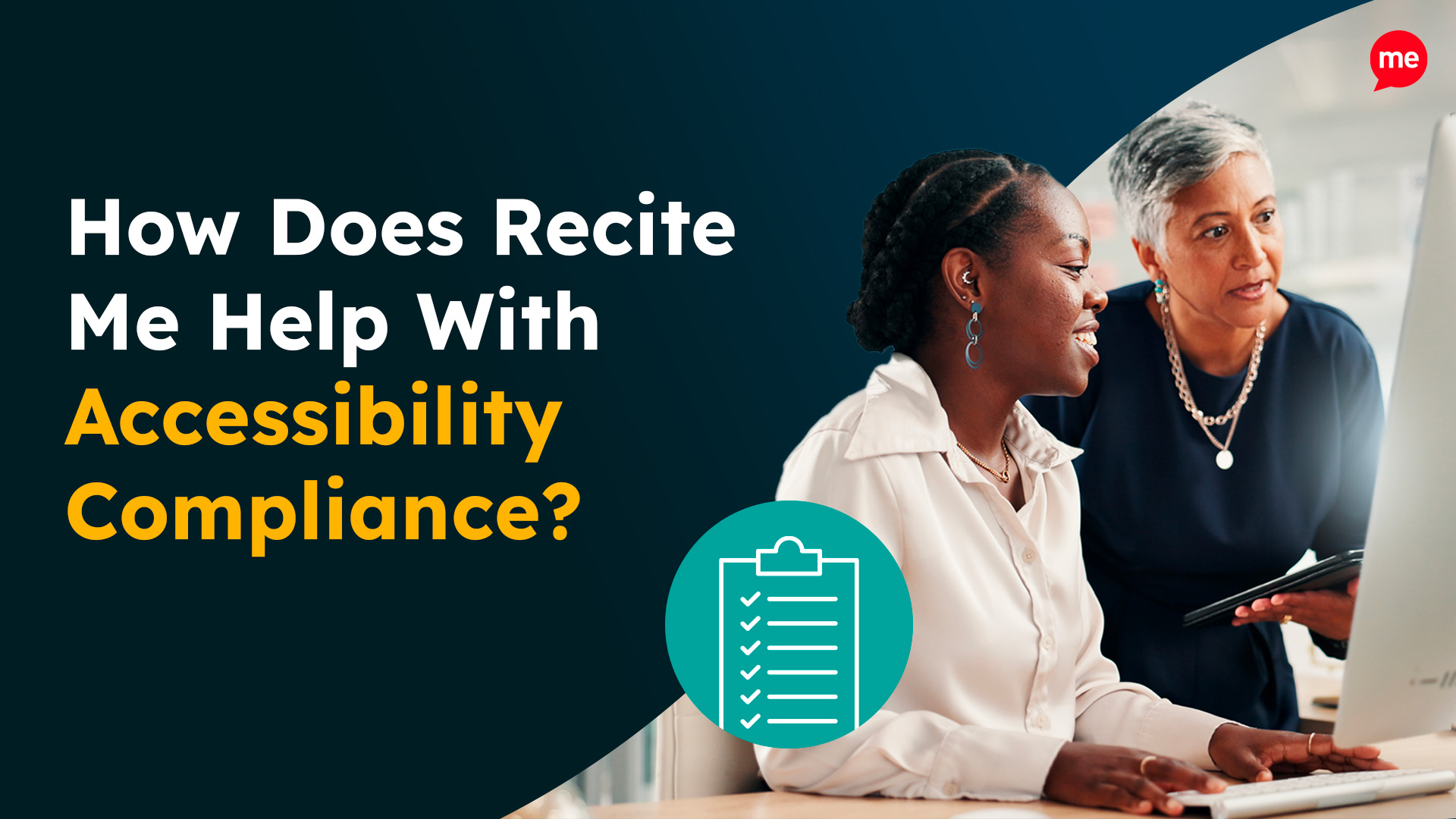Get A Free WCAG Compliance Check Of Your Website
Download NowIn a world increasingly reliant on the internet, having an accessible website is not just a nicety, it’s a necessity. But knowing how to make your website accessible takes some work. This is where the Web Content Accessibility Guidelines (WCAG) come into play. But what exactly is WCAG, and how can you stay compliant?
What is WCAG?
The Web Content Accessibility Guidelines (WCAG) are a set of recommendations developed by the World Wide Web Consortium (W3C) to make web content more accessible to people with disabilities. These guidelines are designed to provide a single shared standard that meets the needs of individuals, organisations, and governments internationally.
Each guideline in WCAG relates to a certain aspect of web accessibility, for example, time-based media, text alternatives, and input assistance. Success criteria exist for each guideline, outlining how to reach different standards, or levels, of conformance. The lowest level of conformance is A and the highest is AAA, with most organisations aiming to achieve AA, a mid-level conformance. You can learn more about what the different level of WCAG are here.
But regardless of the standard you are striving for, understanding WCAG is essential for any modern organisation.
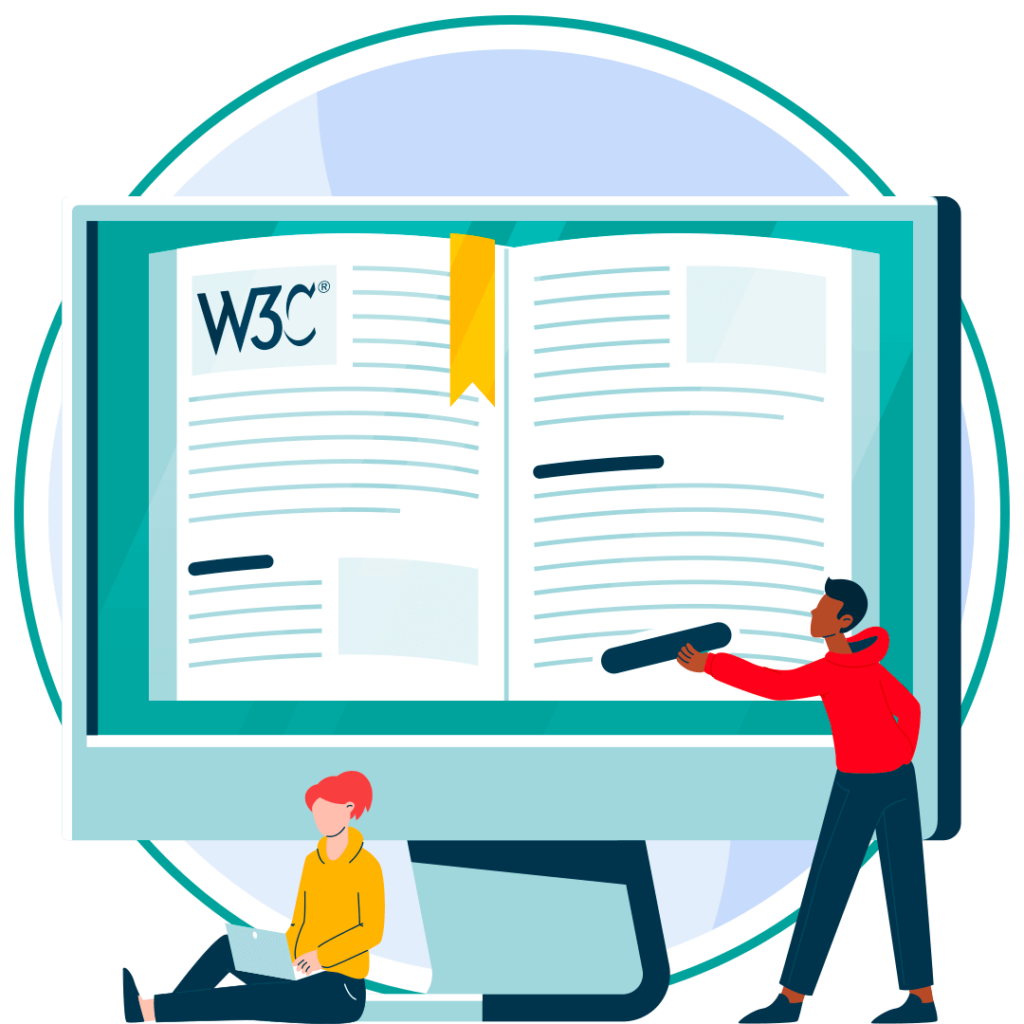
The Key Principles of WCAG
At the heart of WCAG are four foundational principles, denoted by the acronym POUR: perceivable, operable, understandable, and robust. Each principle acts as a different pillar of accessibility, ensuring that web content is within reach of all users, regardless of their abilities.
1. Perceivable
According to WCAG, all web content must be perceivable. This means that text on websites should be easily readable, images should be clearly visible, and all content should be compatible with a screen reader so that it can be read aloud for those with visual impairments.
2. Operable
Operable refers to the user interface and navigability of a website. This key principle implies that users must be able to interact with the website interface, whether they are using a mouse, keyboard, or assistive technologies. For instance, those who are unable to use a mouse due to motor impairments may need to rely on using their keyboard to browse websites. Various website elements, like buttons and links, must therefore be reachable by keyboard alone.
3. Understandable
The third principle, understandable, is all about how easy a website is to understand, both in terms of its content and the functionality of its interface. Things like forms should have clearly labelled fields with explanations if necessary, and buttons or drop-down menus should follow a comprehensible logic.
4. Robust
Finally, robust refers to a website’s interpretability, meaning the ability for its elements to be read by a variety of different agents, including assistive technologies. The use of semantic HTML here helps ensure that content is clearly distinguishable for assistive technologies, as well as browsers, and can be interpreted correctly across different devices and platforms.

Free WCAG Compliance Check of your Website
Finding WCAG compliance issues is now easier than ever. Recite Me offers a free automated scan of your website’s homepage to highlight non-compliance. You’ll get recommendations on how to fix them, helping to improve your accessibility score.
Best Practices for WCAG Compliance
Achieving WCAG compliance involves adhering to a series of best practices, each of which embodies the POUR principles. This section explores how exactly these best practices raise accessibility standards, who they benefit, and how compliance with WCAG can be achieved. Some of these best practices for WCAG include:
1. Accessible Image Alt Text
Alt text, or alternative text, is used to describe the content of images so that it can be read aloud by screen readers for the benefit of visually impaired users. In other words, it grants access to images for those who cannot see them, which is crucial for individuals who rely on screen readers to navigate the web. Take an image of a dog in a park, for example. Effective alt text might read “Golden retriever playing fetch in a grassy park”, as this allows users to visualise the image accurately without needing to view it.
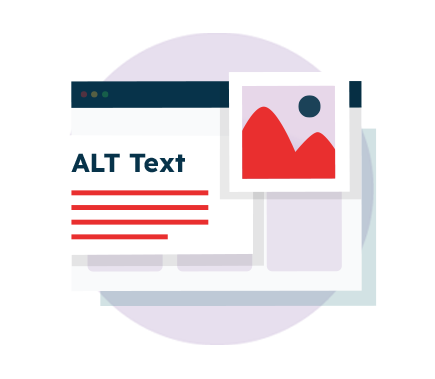
2. Provide Captions for Multimedia
Captions are essential for users who are deaf or hard of hearing. They provide text versions of spoken content and other important sounds in videos. For example, a YouTube video explaining how to bake a cake should include not only captions for all spoken baking instructions, but descriptions of significant sounds too, like the timer going off or the whir of a blender.
3. Keyboard Accessibility
For those with motor impairments, using a mouse might not be possible, hence the importance of keyboard accessibility when it comes to designing your website. All website functionalities should be reachable via keyboard alone, meaning elements like forms, buttons, and links must be navigable with the Tab key, Spacebar, and Enter button, without the need for any cursor movements.
4. Accessible Font Type & Size
Part of complying with WCAG is ensuring that fonts are easy to read, and that text can be resized up to 200% without loss of content or functionality. Accessible fonts, like Arial or Verdana, should be used in place of more decorative fonts, as this gives those with visual impairments and reading difficulties a better chance of perceiving the content presented to them. Tools, like an accessibility toolbar, allow users to customise website content in the most suitable way for them, which includes altering font styles and sizes, among other things.
5. Clear Colour Contrasts
Ensuring a high contrast ratio between graphical elements and their background is an important part of making websites readable and understandable, particularly for users with visual impairments such as colour blindness. Black text on a white background, for example, provides a clear contrast, making the text stand out so that it is easy to read. Light gray text on a white background, on the other hand, does not stand out and is difficult to read as a result. It may sound simple, but always being aware of colour contrasts will help you and your organisation stay WCAG compliant.
6. Accessible Form Fields
To remain WCAG compliant, form fields should be clearly labelled and instructions provided where relevant. Other than making the form itself understandable, conveying the purpose of each field helps users with screen readers, who miss out on visual context, to better comprehend the form. Instead of a generic “Submit” button, for example, using a specific label like “Submit Your Application” helps users know what they are submitting and at which point of the form they are at.
7. Mobile Accessibility
Given how many phone and tablet users there are in the world today, mobile accessibility is essential. It’s all well and good having an accessible website, but if that same accessibility isn’t available on mobile devices, then a large portion of the population are still being excluded. Many website builders nowadays include features which allow creators to switch between desktop view and mobile view, meaning you can check that buttons are appropriately sized and text is readable without horizontal scrolling.
8. Compatibility with Assistive Technologies
Assistive technologies examples such as screen readers and braille readers, help individuals with disabilities like visual impairments to access all the same elements of a website’s functionality. But for assistive technologies to work, websites must be compatible with them. The use of semantic HTML links, like <nav>, <header>, and <footer>, make it easier for assistive technologies to interpret the website content, translating it more accurately into verbal content. A machine might be able to better distinguish the body of an article from its header, for example, if semantic HTML links are used, improving your website’s screen reader accessibility as a result.

9. Descriptive Anchor Text
All links displayed on a website page should have descriptive anchor text that clearly indicates the destination or purpose of the link. Anchor text that reads ‘click here’, for example, is a lot less clear than ‘read our accessibility guidelines’. For those that use screen readers, having descriptive links like this supports navigation, helping you to know which page you are visiting without clicking on every link.
10. Interactive Elements Easily Identifiable
Part of WCAG compliance is making sure that buttons, links, and other interactive elements are easily distinguishable from non-interactive content. This is because the clear identification of interactive elements helps users with cognitive disabilities, and those using screen readers, to navigate the site more effectively. Some easy ways to do this include underlining linked text or ensuring that buttons have distinct colours or borders compared to other elements.
Our 40-page Digital Accessibility & Inclusion Toolkit helps businesses break down online barriers and make a real impact. It offers practical advice on all aspects of digital accessibility, from writing an accessibility statement to accessible website tips and inclusive hiring.
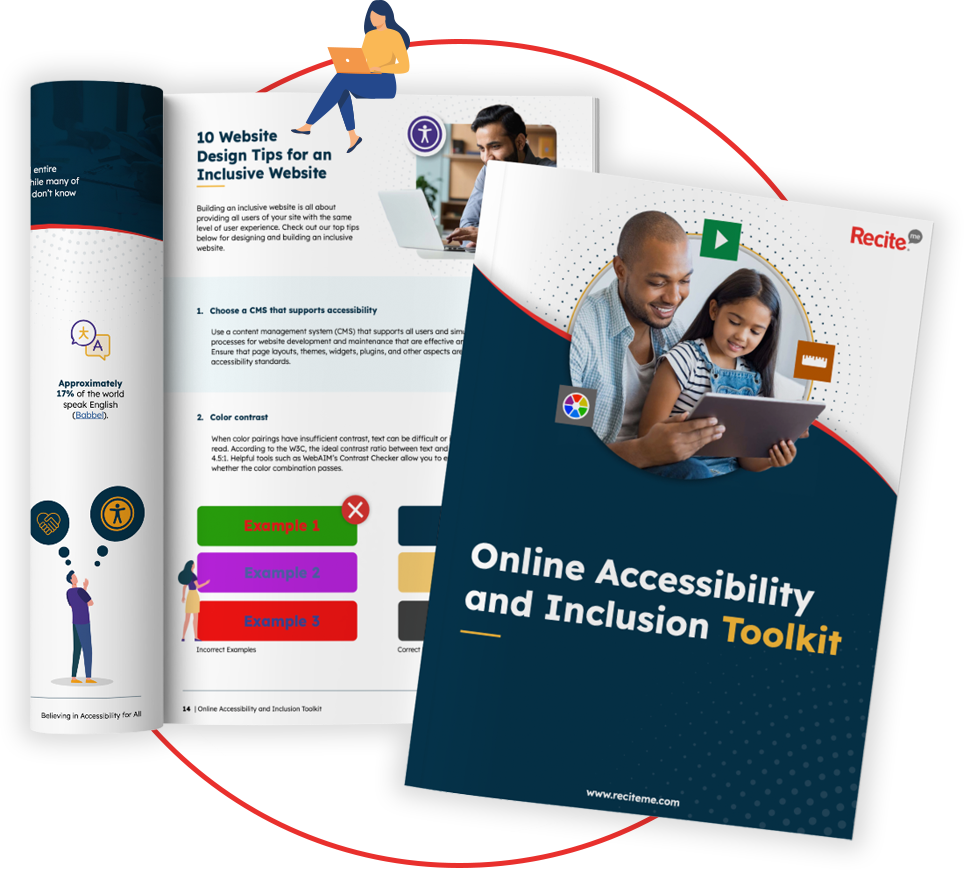
Benefits of Following WCAG Best Practices
Besides offering WCAG compliance, following these best practices brings with them a range of unique advantages that extend beyond just website users. This section highlights some of the most relevant benefits.
- Improved User Experience: Accessible websites with clear navigation and readable fonts offer a better browsing experience for everyone, not just those with disabilities.
- Increased Audience Reach: By making your website accessible, you are essentially opening your organisation up to a wider audience, which means a broader pool of potential clients, employees, investors, etc.
- Legal Compliance: Many countries have laws requiring web accessibility, so ensuring your site complies with WCAG can help you avoid legal issues in the long run.
- SEO Benefits: Search engines use accessibility features like alt text to understand the content of images better. So, by including alt text on your website’s multimedia, you can improve your search engine ranking and overall SEO.
- Enhanced Brand Reputation: Demonstrating a commitment to accessibility can enhance your brand’s reputation and foster loyalty among users who appreciate inclusive practices. This is just one of many business cases for inclusive practices such as WCAG compliance.
- Future-Proofing: Part of complying with WCAG is ensuring your website is compatible with new devices and assistive technologies, helping to future-proof it as a result.
- Competitive Advantage: By prioritising accessibility, you can differentiate your brand in a competitive market, attracting customers who value inclusivity.
- Increased Conversion Rates: Improved usability means that users stay on your site longer and explore more pages, often leading to more product sales.
- Social Responsibility: Ultimately, web accessibility plays a huge role in diversity and inclusion, and is therefore a necessary step towards creating a fairer, more equitable society.

Become WCAG Compliant with Recite Me
Act today to ensure WCAG compliance and mitigate legal risk. Get started on your website accessibility strategy by working through the following action points:
- Contact our team for more advice about WCAG standards and Accessibility best practices.
- Find out more about the Recite Me Web Accessibility Scanner.
- Schedule a free scanner demonstration to learn how our technology can help you.
- Run a free scan of your website for WCAG 2.1 AA compliance.
